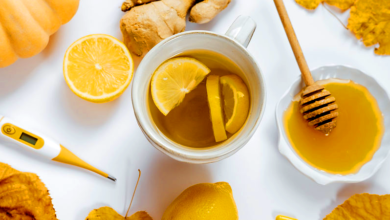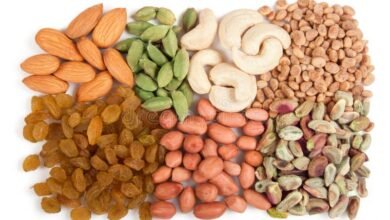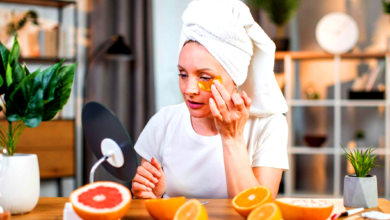Inflammatory Breast Cancer Symptoms

Breast skin changes, redness, edema, and discomfort may indicate inflammatory breast cancer.
Inflammatory Breast Cancer
A uncommon and severe type of breast cancer, inflammatory breast cancer (IBC) often develops rapidly, often within a few weeks or months, according to the National Cancer Institute (NCI). IBC begins in the breast milk ducts and quickly travels to the skin. According to the American Cancer Society (ACS), it represents 1%–5% of all instances of breast cancer.
The symptoms are more superficial as IBC has penetrated the skin of the breasts. A report published in the American Journal of Obstetrics & Gynecology in April 2021 states that whereas breast lumps are present in most instances of non-inflammatory breast cancer, they are only present in around 25% of cases with IBC.
According to the NCI, IBC symptoms might resemble those of several other non-cancerous illnesses, such as wounds or infections. IBC symptoms appear quickly; a diagnosis may be made if they have been present for less than six months. Usually, just one breast is impacted.
Read More : The 5 Best Probiotic Foods for Gut Health
According to the ACS, early diagnosis is critical since IBC spreads quickly. See your healthcare physician as soon as possible if you encounter any of the symptoms listed below.
Redness
According to the NCI, redness (erythema) in IBC spreads quickly to encompass at least one-third of the breast. The skin might seem bruised, pink, or reddish-purple.
This symptom may affect around 62% of individuals with IBC, according a September research that was published in the journal PLOS One. For persons with IBC who are white or Hispanic, this is the most common form of breast alteration.
In addition, redness may be a sign of several other non-cancerous breast disorders. Erythema combined with lumpiness, warmth, and discomfort may be caused by an infection called mastitis, which is prevalent in nursing individuals, according to the NCI. The disorder known as fat necrosis, which causes painless lumps, may cause skin that is red, bruised, or dimpled.
Swelling
Similar to redness, IBC-related skin swelling (edema) develops swiftly across at least one-third of the breast, according to the NCI. According to the American Cancer Society, one breast may look bigger or fuller than the other.
Skin fullness or edema may occur in around 48% of IBC patients. This is the most common form of breast alteration among Black individuals with IBC, according to a September 2018 research.
The NCI states that breast swelling might happen spontaneously around your menstruation. According to the US Food & Drug Administration (FDA), it may also occur as a result of an accident, infection, or complication after breast implant surgery.
Lymph nodes beneath the arm, around the collarbone, or in both sites may swell in people with IBC, according to the NCI. As stated by the National Library of Medicine’s MedlinePlus database, lymph nodes are immune system areas where the body fights illness.
Skin Like an Orange Peel
The most identifiable sign of inflammatory breast cancer (IBC) is peau d’orange, or skin that feels and looks like orange peel. According to the ACS, it causes thickening and dimpling of the breast skin. According to a September 2018 research, dimpling or discolouration may occur in around 46% of IBC patients.
According to the NCI, these and other changes in the appearance of the breast skin are caused by IBC cells blocking cutaneous lymph veins, which leads to an accumulation of lymphatic fluid. According to MedlinePlus, the lymph veins typically transport lymph, a component of the immune system, throughout the body to eradicate illness.
StatPearls states that fibrocystic breast disease (FBD), the most prevalent non-cancerous breast illness, is one of the disorders for which peau d’orange may be a sign. Pain and discharge from the nipples are other symptoms of FBD. Women between the ages of 30 and 50 are most often affected, however it may impact anywhere from 30 to 60% of them.
Inverted Nipple
A nipple may retract (start to point inward) in about 16% of IBC cases, per the September study. It may also become flat.
Inverted nipples affect 10–20% of the population, according to StatPearls. Some people may acquire this syndrome with breast sagging and abrupt weight loss, and many others are born with it. Retraction of the breasts may also occur during breast surgery or as a result of an illness like mastitis.
Warmth, Pain, and Tenderness
The NCI states that discomfort, burning, soreness, or unusual warmth may be experienced in the IBC-affected breast. Moreover, the ACS states that the breast may feel heavy or uncomfortable. These symptoms are also typical for infections of the breast, including cellulitis or mastitis.
An August 2018 study that was published in the journal Surgical Clinics of North America suggests that medical professionals may mistake IBC for an infection and attempt to treat it with medication. A delayed diagnosis may arise from this. The American College of Surgeons advises getting further testing done if, after taking antibiotics for 7–10 days, your symptoms don’t improve.
The report also states that healthcare providers may misdiagnose IBC as an allergy response, breastfeeding-related change, insect bite, or cyst (a fluid-filled, non-cancerous lump). Make careful to follow up with your physician if the suggested therapy is ineffective in relieving your symptoms.
Read More : The Incredible 9 Health Benefits of Tomatoes: A Nutrient-Packed Superfood
According to the ACS, while receiving an IBC diagnosis might be challenging, therapies are improving. Numerous therapeutic options, including radiation therapy, surgery, and chemotherapy, are currently available. Some patients may be eligible for targeted treatment and drug-based immunotherapy. It’s common to undergo many treatments at once.
Be aware of any symptoms, and don’t be afraid to get help from a medical professional if anything doesn’t seem right. Early diagnosis makes treating IBC simpler.











